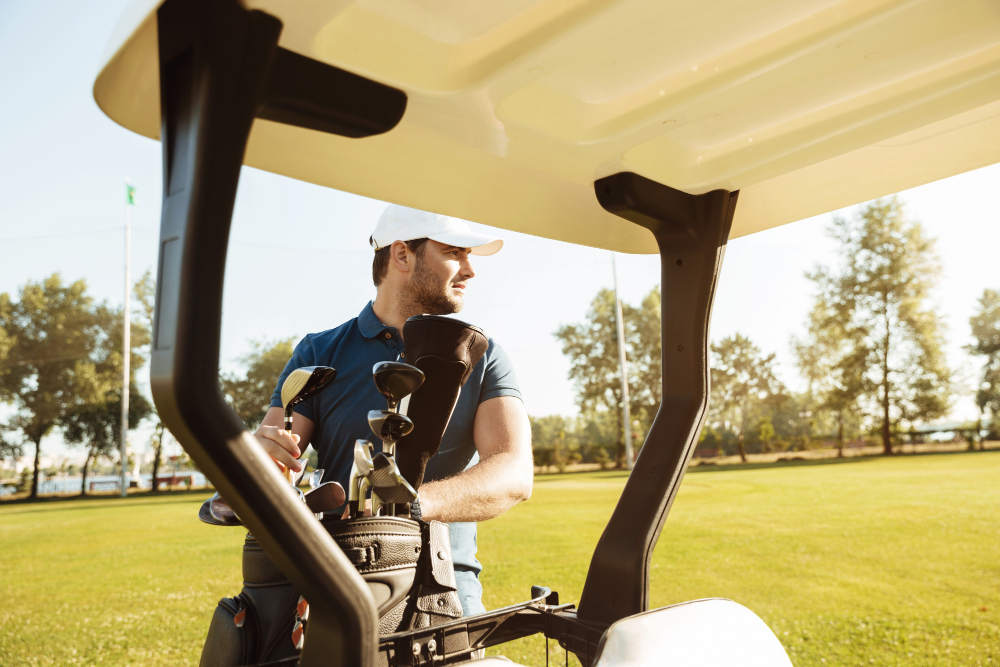Golf carts are a convenient way to travel around golf courses, resorts, and even neighborhoods. However, their small size and low speeds can make them dangerous if not properly maintained and operated. That’s why it’s crucial to perform regular safety inspections on your golf cart. In this blog post, we will discuss the importance of golf cart safety inspections and provide you with a comprehensive checklist of key aspects to inspect. We will cover everything from the brake system to the electrical system, steering and suspension, overloading, traffic rules for golf carts, and why operating under the influence is unsafe. By following our DIY inspection checklist, you can ensure that your golf cart is safe for use and avoid any potential accidents or injuries.
Understanding the Importance of Golf Cart Safety Inspection
Regular safety inspections are crucial for the proper functioning of golf carts. They help identify potential hazards and prevent accidents, ensuring a safe and enjoyable experience for all users. A thorough inspection can detect any mechanical issues before they become major problems, saving time and money on golf cart repairs. Moreover, regular inspections are essential for compliance with safety regulations, promoting the overall safety of golf carts on the course and utility vehicles. Prioritizing safety through visual inspections and taking necessary precautions is key to maintaining the integrity and reliability of golf carts.
Key Aspects of a Golf Cart Safety Inspection
To ensure a safe golf cart experience, it is important to conduct a thorough safety inspection. Start by inspecting the brake system to ensure proper operation and avoid accidents. Checking the electrical system is crucial for functioning lights and signals. Assess the steering and suspension to maintain control and stability while operating the golf cart. Additionally, remind passengers to keep all body parts inside the cart to prevent injuries. Lastly, avoid overloading the cart to maintain stability and maneuverability.

The Role of Proper Maintenance in Ensuring Safety
Regular maintenance plays a crucial role in ensuring the safety of golf carts. By conducting visual inspections and addressing any issues promptly, golf cart owners can prevent unexpected breakdowns and accidents. Proper battery maintenance is essential to avoid problems with older batteries and maintain optimal performance. Checking tire pressure regularly helps to ensure stability and traction while driving. Inspecting for loose parts is important as it prevents accidents caused by dislodgement. Timely repairs and maintenance reduce the risk of malfunctions, making golf cart rides safer for everyone.
Inspecting the Brake System: What to Look Out for?
When conducting a golf cart safety inspection, it is crucial to pay special attention to the brake system. Check for proper brake pedal response, inspect brake pads for wear and tear, ensure functioning brake lights, test the parking brake, and verify that the brakes provide sufficient stopping power.
The Significance of Checking the Electrical System
When performing a golf cart safety inspection, it is crucial to pay attention to the electrical system. A visual inspection should be conducted to ensure the functionality of headlights, brake lights, and turn signals. The horn should also be tested to ensure it is loud and clear. It’s important to check that the battery connections are secure and inspect the wiring for any signs of damage or fraying. Finally, make sure the electrical system does not interfere with other golf cart functions. By completing these checks, you can ensure the safety of both the driver and passengers.
How to Assess the Steering and Suspension?
Assessing the steering and suspension of your golf cart is essential for ensuring a safe ride. Check for smooth steering response and no excessive play. Inspect suspension components for signs of wear or damage. Test the cart’s ability to handle bumps and uneven terrain. Verify proper alignment and secure attachment of all steering and suspension parts.
Why Keeping All Body Parts Inside the Golf Cart is Crucial?
Keeping all body parts inside the golf cart is crucial to reduce the risk of accidents and injuries. Avoid reaching out, securely fasten seat belts if available, and warn passengers against hanging legs or feet outside. Following safety guidelines prevents accidents caused by falling off.
Exploring the Dangers of Overloading Your Golf Cart
Overloading a golf cart compromises its stability and handling, posing significant dangers. When the weight limit is exceeded, it can lead to brake failure and tire damage, putting both the driver and passengers at risk. Additionally, an overloaded golf cart becomes more prone to tipping over, especially when taking turns or navigating uneven terrain. To maintain balance, it is crucial to distribute weight evenly throughout the golf cart and avoid carrying excessive cargo or passengers. Prioritizing safety through proper weight management is essential to prevent accidents and ensure a smooth and secure ride.
Traffic Rules for Golf Cart: What You Should Know?
Observe all applicable traffic rules for golf carts, ensuring safe and responsible driving. When available, stick to designated paths and roadways. Give way to pedestrians and other vehicles, avoiding sudden maneuvers. Stay focused by refraining from distractions like cell phones while driving.
Why is it Unsafe to Operate a Golf Cart Under Influence?
Driving a golf cart while under the influence of alcohol or drugs can have a negative impact on judgment and reaction time, which in turn increases the chances of accidents and injuries. It is important to note that golf carts have the potential to cause significant damage even when traveling at low speeds. Additionally, driving a golf cart while intoxicated is against the law and can lead to penalties. It is always advisable to operate a golf cart with a clear state of mind and in compliance with legal regulations.
How Often Should a Golf Cart Be Inspected?
Ensuring the safety of your golf cart and avoiding any potential problems requires regular inspections. To maintain the optimal condition of your golf cart, it is recommended to conduct a comprehensive inspection every 3-6 months. Moreover, it is crucial to inspect the cart before and after long journeys to promptly address any maintenance requirements and prevent breakdowns during travel. By following a checklist, you can ensure that no vital components are overlooked.
Conclusion
To make sure your golf cart is safe, follow our DIY checklist. This will help you identify any potential problems before they become major issues. The checklist covers important areas like brakes, tires, lights, and signals. If you’re not confident in checking your golf cart yourself, Golf Cart Rentals The Villages can help. Their team of experts will perform a safety inspection to ensure that your golf cart meets all the necessary standards. For safe operation, don’t take any chances with your safety – contact Golf Cart Rentals The Villages today to schedule your inspection.


